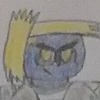HOME | DD
 AlbertW25 — Battle of Bataan (SV)
AlbertW25 — Battle of Bataan (SV)

#alternatehistory #alternateuniverse
Published: 2024-04-21 21:56:21 +0000 UTC; Views: 1217; Favourites: 9; Downloads: 0
Redirect to original
Description
(Slavia Verse)The Battle of Bataan was an intense engagement between American/Filipino Forces and the forces of the Empire of Japan. The battle lasted for three months and two days, with the Japanese taking heavy losses, while the surviving American and Filipino personal were evacuated by submarine, aircraft carriers, hospital ships, and aircraft to Australia.
Prior to the battle, starting from 1903, the US Army decided to properly train the then-nascent Philippine Commonwealth Army. Veteran officers were sent to properly train the troops, which in 1904, numbered around eight thousand thousand soldiers. There was a program to raise the number of troops from the eight thousand to a projected eighty thousand. They were also equipped with adequate weapons. The first test of the new Philippine Commonwealth Army was during the First World War, when a Philippine Expeditionary Army was sent to the Western Front.
From the interwar period to the Japanese Invasion of the Philippines in 1942, the Philippine Commonwealth Army would continue to be trained and modernized by American and Yugoslav Officers and equipment. The Philippine Commonwealth Air Force was equipped with Curtiss P-36 and P-40 Aircraft, and the Philippine Commonwealth Navy had undergone a program to have an adequate navy. All of this done to give the Philippines a sort of fighting chance in the event Japan would invade.
General Douglas MacArthur, commander of the United States Army in the Far East, would set up two fallback positions, designated as Fortresses Bataan and Corregidor. They were tie down Japanese forces to give extra time for the US to react. The two locations were fortified to be hard to take. When the time came for the Japanese Invasion of the Philippines in 1941, the Philippine Commonwealth Armed Forces would cause heavy losses to the Japanese Invasion Force.
When the Japanese overran most of the Philippines, there were two strong holdouts, Bataan and Corregidor. For Bataan, the Japanese had sent around seventy-five thousand to dislodge the American/Filipino Defenders, numbering around a hundred and twenty thousand. When they attacked, the Japanese were shocked to see a network of trenches, caves, bunkers, and defenses that they would be hard pressed to take.
Even the Imperial Japanese Army Air Force were having trouble, as they would encounter heavy AA Defenses, losing a lot of aircraft. For every ground the Japanese gained, they would lose around sixty men. Everyday was a slogging fest for the two sides. Around this time, an evacuation for the Defenders of Bataan was underway, as initially those who were wounded or civilians would be evacuated by a heavily defended convoy evacuation.
Soon, as the final weeks of Fortress Bataan began to close in, troops were evacuated as well, with a sizable Filipino Rearguard staying behind to ensure the last of the troops and civilians evacuate as well. On the night of April 8th, the last convoy ships left Bataan Peninsula, leaving around five thousand Filipinos. Around three thousand Filipinos would escape to the jungles to fight in a guerilla war against the Japanese. The remaining two thousand would mount one last brave act.
On the morning of April 9th, the two thousand Filipino's would use bayonets, rocks, sticks, and even their bare hands, then with the sound of a bugle, they would charge towards the Japanese positions, stunning them. The Filipinos would overwhelm the enemy lines, going far as near the HQ of the commanding officer, Masaharu Homma, who would later remark:
"The Filipino's on this day have shown no fear and intense bravery, like the spirit of Bushido."
'The Charge of the Filipino Warriors', as they were called, would end less then half an hour later, with only seven of them being captured alive. The Japanese would lose around a thousand and two hundred and sixty-four in the attack. Overall, total losses for the Japanese were high. Of the total seventy-five thousand troops, around twenty-eight thousand were killed or wounded. For the Americans, they suffered around two thousand casualties, with the Filipino's taking heavier losses.
The Battle of Bataan, although an eventual Japanese Victory, would be a major morale boost for the Americans, with MacArthur promising to return on day, which he would do so in 1944.
Related content
Comments: 2

👍: 0 ⏩: 1

👍: 0 ⏩: 0

















